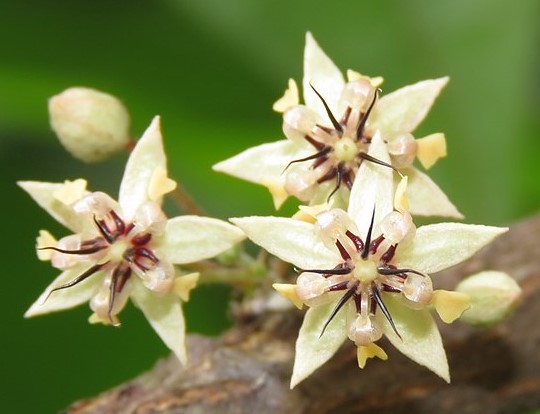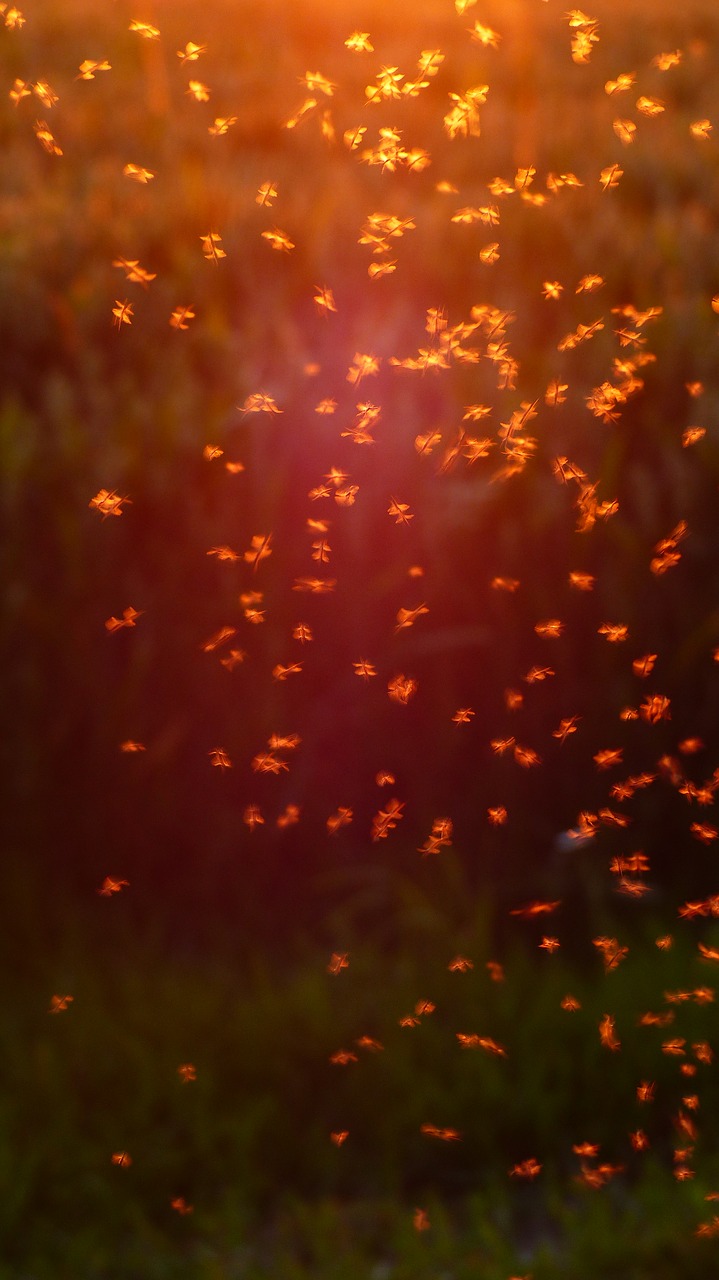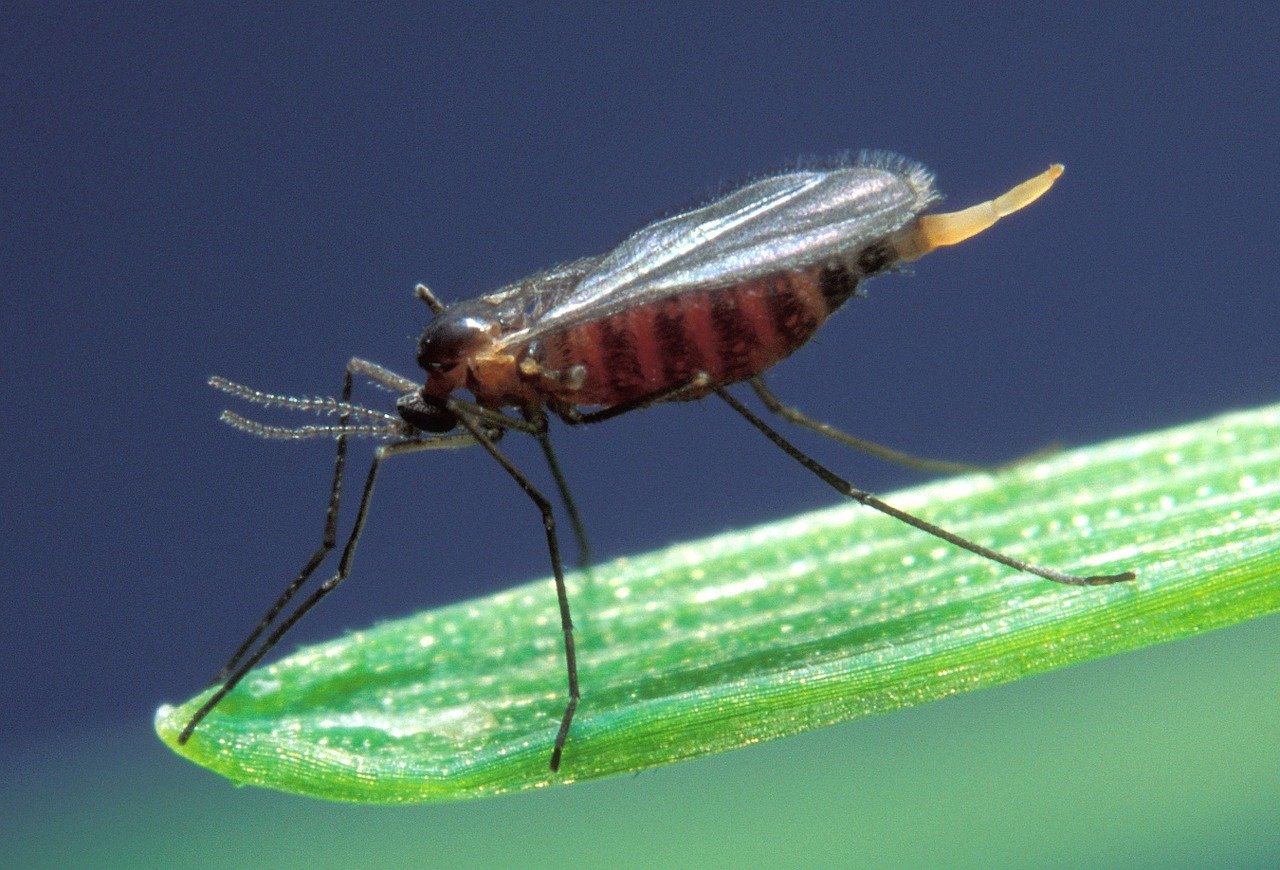Never again will I go on one of your half-baked treasure hunts in the jungle. We were swarmed by those hell flies. I had hundreds of blistering stings that burned and itched for days.— Letter to a known Adventurer and Treasure Hunter of
Salaris
Named for its color, its role in pollinating the Imbrasio
cacao flowers, and for the sting of its bite, the
fire midge is both a bothersome pest and a vital component of agriculture in the tropical region of
Salaris and
Eldahi.
It is a small, biting fly - not to be confused with the bioluminescent firefly.
The fire midge releases formic acid into its bite, the sting similar to a fire ant's bite.
Agricultural Importance
The fire midge is the primary pollinator of the
Imbrasio cacao flower, the variety of cacao native to Salaris and Eldahi, named for its fiery red pods. As such, it is vital to the production of cacao beans and chocolate.
Swarms of fire midges often hover near the flowering cacao trees, and can be a real nuissance to harvesters of the cacao pods. Harvesters must wear a specific blend of oils that includes citronella on their skin to repel the flies, and will often harvest during midday, avoiding dawn and dusk when the midges are most active.
Dietary Needs & Habits
Both the male and female fire midges consume cacao flower nectar and nectar from other plants as well. The female fire midge also consumes blood from mammals, including humans, and other insects, requiring the protein for laying eggs.
Dealing with the Pests
Fire midges are vitally important to the chocolate industry in Salaris, and for that reason, pesticides are not used to reduce their numbers. Instead, those living in the tropical regions of
Salaris and
Eldahi find other ways to cope with the biting flies.
- Wear repellants that include citronella oil
- Wear indigo-dyed fabrics
- Avoid outdoor activity when the midges are most active: dawn and dusk
- Fine mosquito netting
- Pants and long-sleeves - cover skin
- Wind or kinetic magic to push back and deter the flies
Mid- and
low-level magic-users who can stir winds around harvesters or otherwise hold the hungry midges at bay are well paid for their services around
Kakan, the center of cacao bean processing and trade. Some witches are paid year-round by the town to keep the midges from within the town walls.
Several such witches are employed during their famous
Chocolate Festival to expand that perimiter and keep tourists from being attacked.
Treating Fire Midge Stings
Fire midge bites, also called stings because of the acid, are painful and create blisters on the skin that burn and itch for days. These stings are generally non-lethal, but occasionally, severe allergic reactions or secondary infections can occur. Do not scratch at the blisters!
To relieve the burn and itch of the stings, you can use cold water or ice, aloe, or healing balm (just be careful not to use
too much!).






Hehehe, came here to comment about the finished article and saw the mention. Thank you for that. I'm glad to have helped with some inspiration!